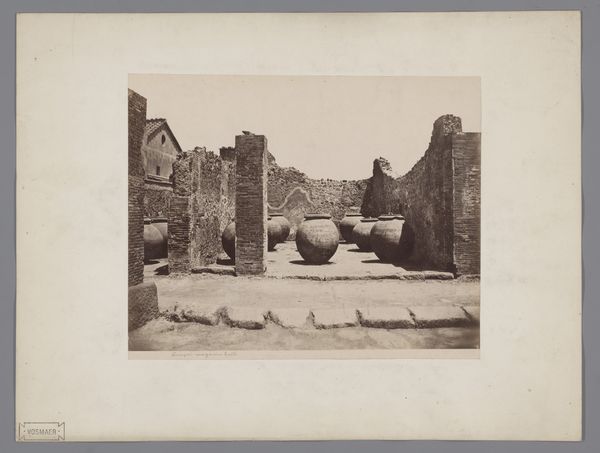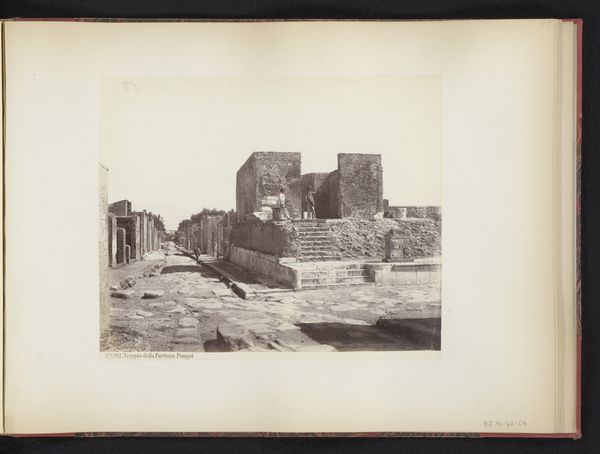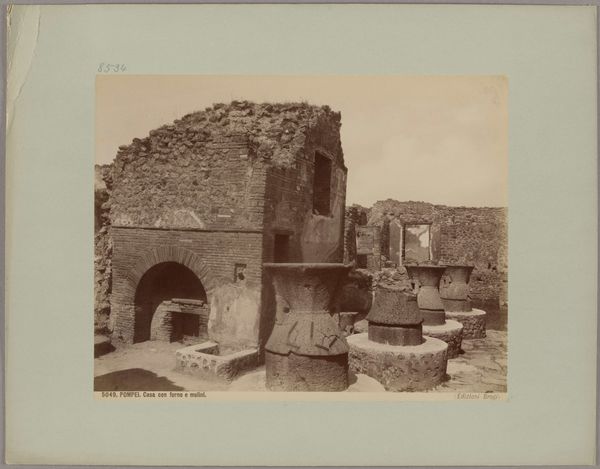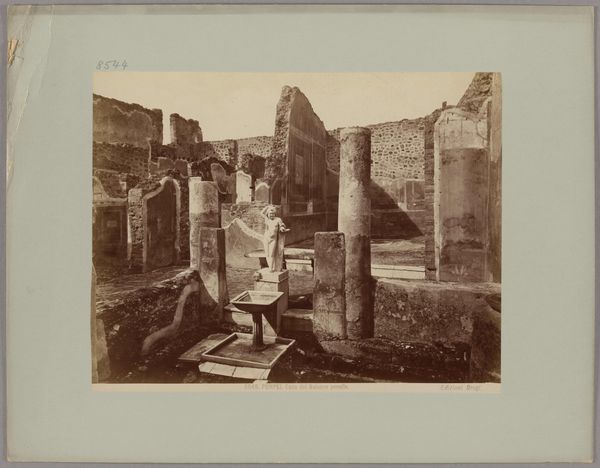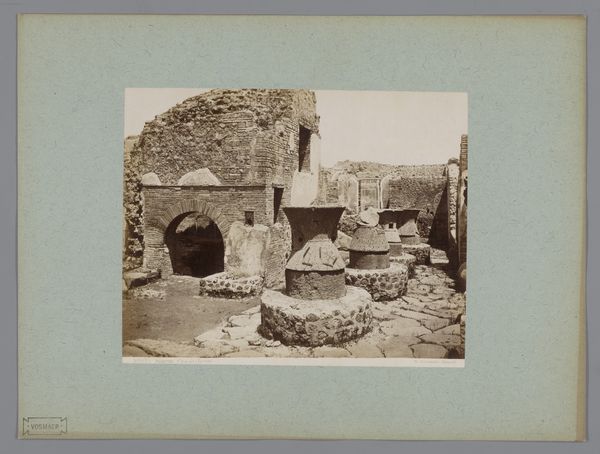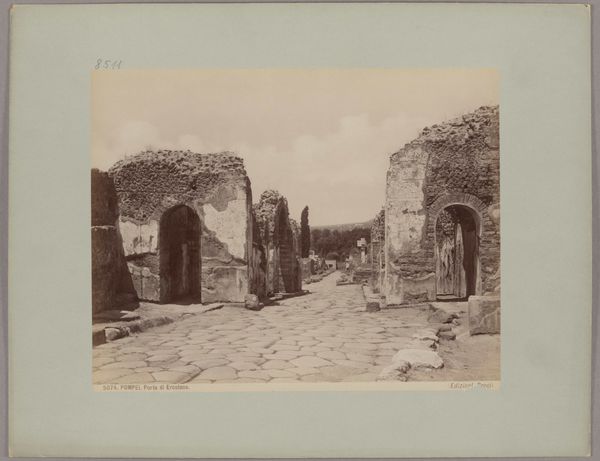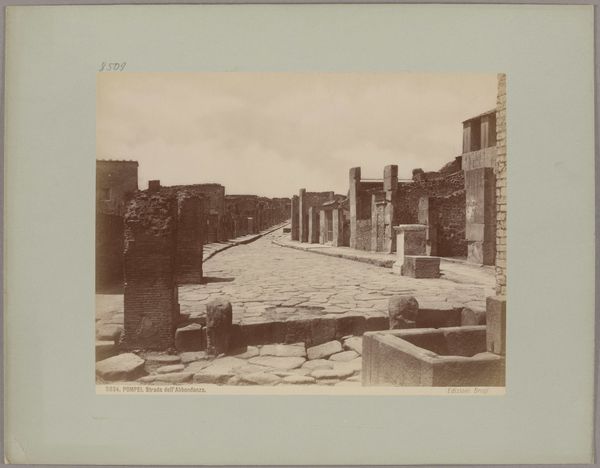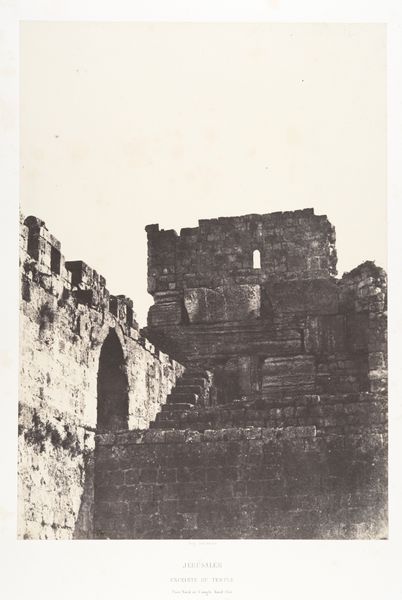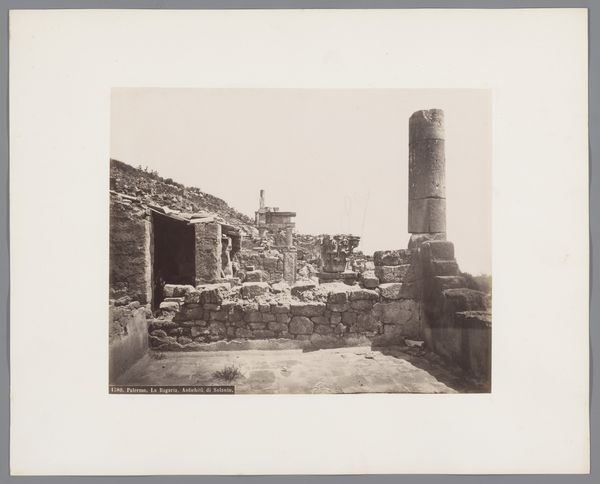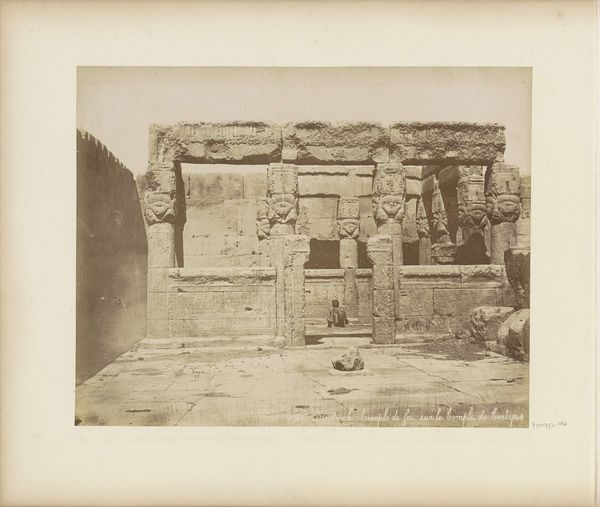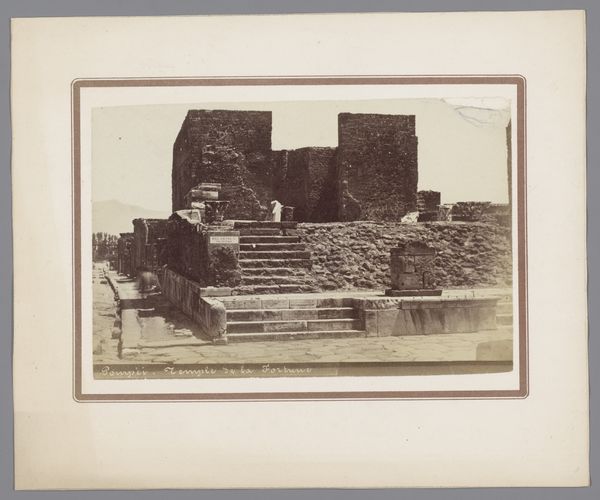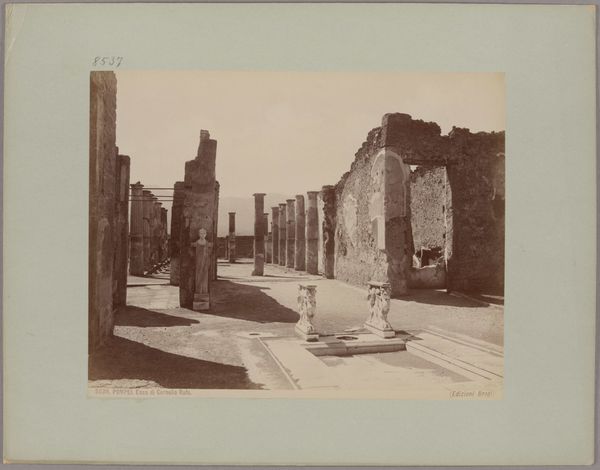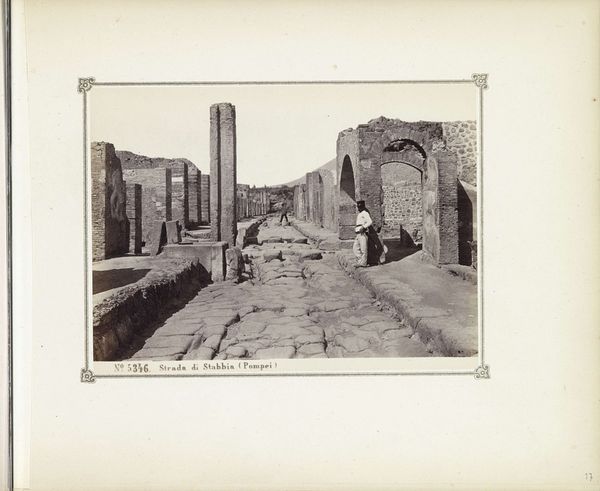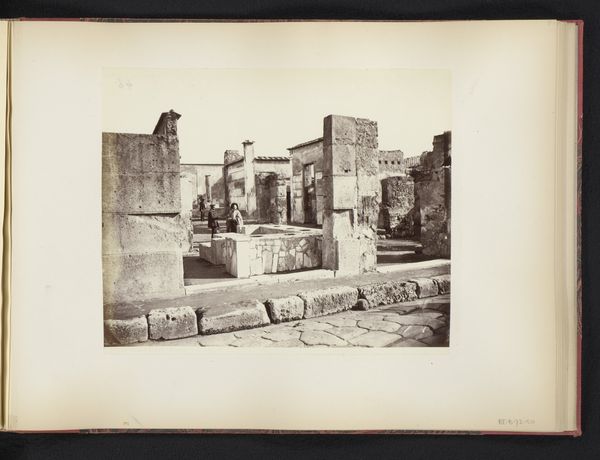
albumen-print, print, paper, photography, albumen-print, architecture
#
albumen-print
#
16_19th-century
# print
#
landscape
#
paper
#
photography
#
ancient-mediterranean
#
italy
#
albumen-print
#
architecture
Copyright: Public Domain
Curator: This albumen print from after 1873 by Giorgio Sommer depicts "Pompeii: The Oil Merchant’s Shop," housed here at the Städel Museum. Editor: It has a stark, haunting beauty. The monochrome tones lend a feeling of timelessness, or perhaps of suspended animation. Those large terracotta vessels dominating the foreground... They are undeniably monumental, but I want to know more about the lives behind their making. Curator: Indeed. The composition directs the eye, the arrangement and tonal scale giving particular focus to these oil storage jars, positioned in front of the crumbling masonry that hints at this ruined structure. The play of light and shadow creates distinct visual interest and evokes a deep meditation on ruin and decay. Editor: I'm immediately drawn to the materials: the porous stone walls, the dense clay of the oil jars. Imagine the labor involved, extracting the clay, shaping it by hand, firing those massive vessels… This image freezes the production line of oil, but I see the marks of human creation. I imagine how important the role of the oil merchant must have been to the commerce and sustenance of this ancient town. Curator: Sommer's skillful use of light as it rakes across the scene emphasizes both the geometry and the decay. We see not just representation, but an artistic sensibility keenly aware of shape, texture and form within this devastated locale. I would argue, even, it transcends a purely documentarian purpose. Editor: Beyond artistic intent, let’s think of it as a record of resource management. Where did that clay come from? How was the oil pressed and transported? These objects weren't simply 'art,' but elements in a whole social system based on specific craft practices. How can we reconcile high-art aesthetics with mundane production and commerce? Curator: Perhaps the beauty lies in this tension you mention—an appreciation for both intrinsic artistic decisions in the print's execution and the representation of daily ancient life it offers. The careful framing does not escape the weight of history bearing down on us, however. Editor: It's a profound example, really, of how considering the labor and material context enriches an aesthetic experience. For me, knowing the full history expands its power to evoke contemplation beyond just simple appreciation.
Comments
No comments
Be the first to comment and join the conversation on the ultimate creative platform.
